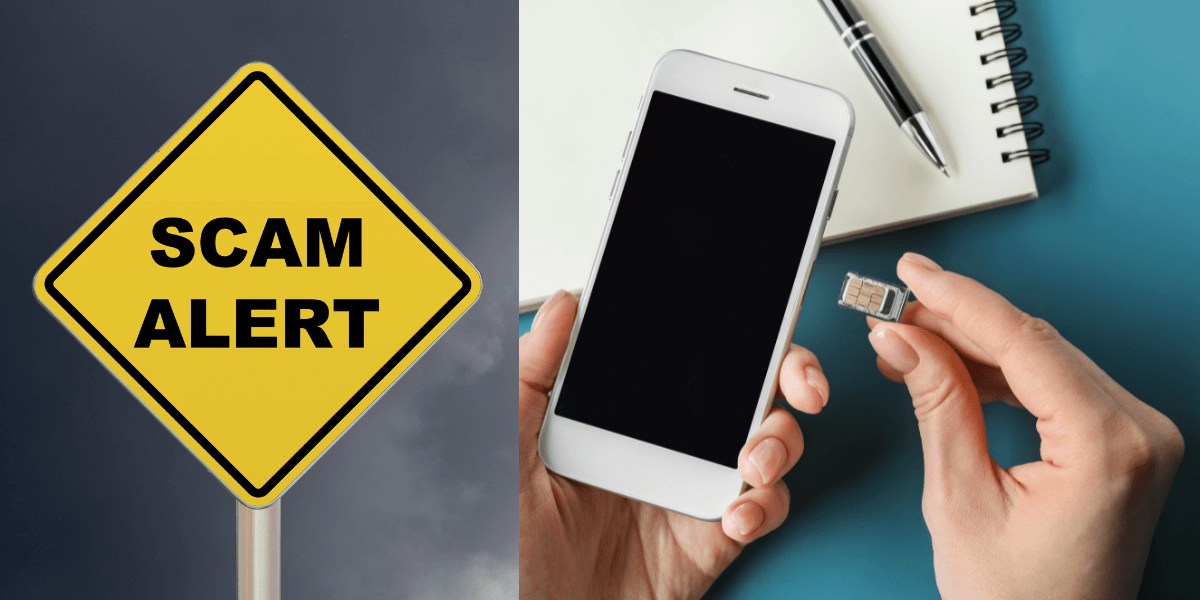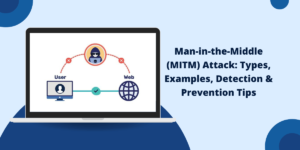What is SIM Swap Scam?
The SIM swap scam (also known as SIM hijacking or SIM swapping) happens when cybercriminals trick your mobile carrier into moving your phone number to a SIM card they control. Once they have succeeded, they can intercept your calls, texts, and two-factor authentication codes, and gain access to your bank accounts, social media, and other sensitive accounts.
Once they take over your number, they can:
- Intercept SMS-based two-factor authentication (2FA) codes to access banking, email, and social media.
- Reset passwords on financial accounts (PayPal, Coinbase, etc.).
- Drain cryptocurrency wallets linked to your phone number.
SIM Swap Fraud Statistics
|
Statistic |
Data |
|
SIM swap fraud cases in 2023 |
Over 1,600 reported in the U.S. |
|
Average loss per victim |
$13,000+ |
|
58% of attacks target crypto investors |
Chainalysis 2024 Report |
How Does SIM Swapping Work? (Step-by-Step Process)
The knowledge of SIM swapping procedures helps people protect themselves from such attacks. The following sequence of actions represents how hackers perform their attacks:
1. Information Gathering
Hackers obtain personal data through:
- Phishing emails pretend to be from banks or carriers
- Data breaches reveal email addresses together with phone numbers and security question answers
- Social media profiling (finding your phone number, birth date, etc.)
2. Social Engineering Attack
The hacker contacts your mobile carrier under false pretenses of being you to request:
- I need a replacement SIM card because I lost my phone.
- My SIM card is broken so I need you to move my phone number to a different SIM card.
The hacker uses stolen personal information including your SSN or account PIN to prove their identity.
3. SIM Porting/Transfer
If successful, the carrier:
- Deactivates your SIM card
- The hacker obtains control of your phone number by activating a new SIM card in their possession.
- Your phone loses service immediately
4. Account Takeover
- The hacker gains control of your phone number to request SMS password resets for banking and email and crypto accounts.
- The hacker logs in to transfer funds before you become aware of the situation
How to Protect Yourself from SIM Swapping
Protecting yourself from SIM swapping requires multiple layers of security. Here are the most effective defenses:
1. Enable SIM Lock/PIN with Your Carrier
All major carriers offer SIM lock protection:
- T-Mobile: “SIM Protection” (Account > Security)
- AT&T: “Number Transfer PIN” (Request online)
- Verizon: “Number Lock” (My Verizon app)
Why it works: Even if hackers have your personal info, they can’t port your number without this PIN.
2. Remove Your Number from Critical Accounts
Where possible:
- Replace SMS 2FA with authenticator apps or security keys
- Use a Google Voice number (not linked to your carrier) for financial accounts
3. Freeze Your Credit
Prevent new account openings via:
- Experian, Equifax, TransUnion (freeze is free)
- ChexSystems (for bank accounts)
4. Monitor for Unusual Activity
Set up alerts for:
- Carrier changes (T-Mobile Account Takeover Protection)
- Bank logins from new devices
7 Powerful Tips to Prevent SIM Swap Scams
- Use an Authentication App (Not SMS 2FA)
- Set a SIM Swap PIN with Your Carrier
- Warn Your Bank & Enable Extra Security
- Freeze Your Credit & Monitor Accounts
- Avoid Sharing Personal Info Online
- Be Alert to Phishing & Fake Carrier Calls
- Use a Separate Number for Financial Accounts
1. Use an Authentication App (Not SMS 2FA)
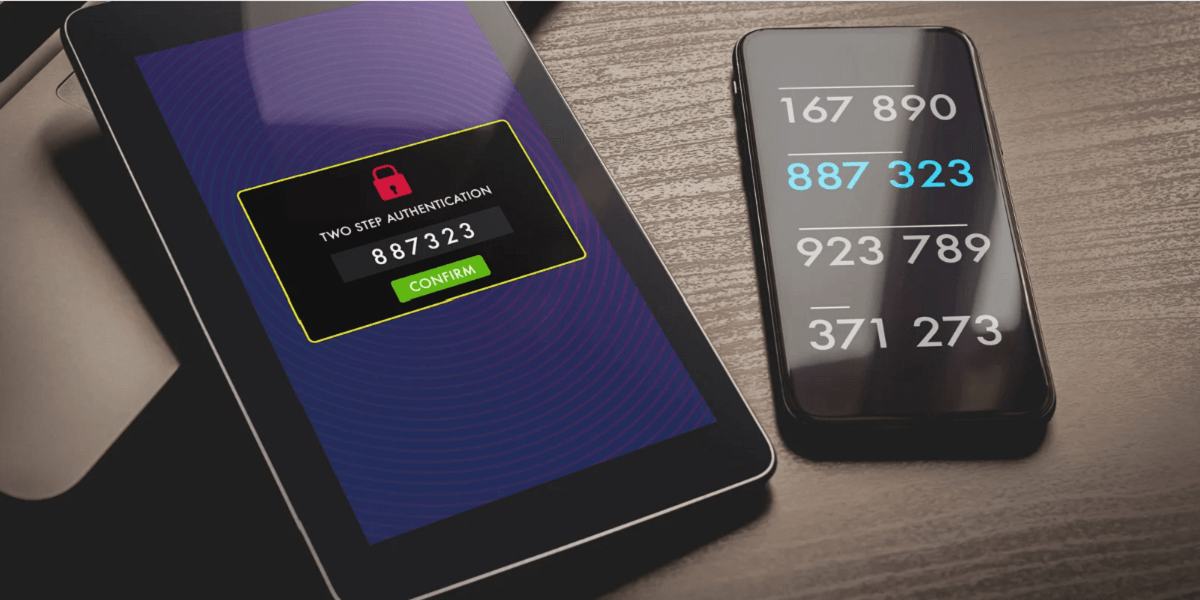
The main weakness in personal cybersecurity exists in SMS-based two-factor authentication (2FA). A SIM swap attack enables hackers to take control of your phone number which lets them intercept verification codes sent through text messages to access banks and email services and cryptocurrency exchanges.
Why Authentication Apps Are Safer:
- Offline Code Generation: The time-based one-time passwords (TOTPs) produced by Google Authenticator, Authy and Microsoft Authenticator operate from your device without SIM swap interception.
- No Carrier Dependency: Authentication apps maintain functionality even when your phone number becomes accessible to hackers.
- Backup Options: Authy allows users to create encrypted cloud backups which enable access to their accounts when switching devices.
How to Switch:
- Open the security settings of your bank, email, or crypto account.
- Disable SMS-based 2FA and enable app-based authentication.
- Scan the QR code with your authentication app.
- Store backup codes securely (e.g., in a password manager like Bitwarden).
Pro Tip: For maximum security, use a YubiKey or hardware security key (e.g., for Google, Coinbase, or banking apps).
2. Set a SIM Swap PIN with Your Carrier
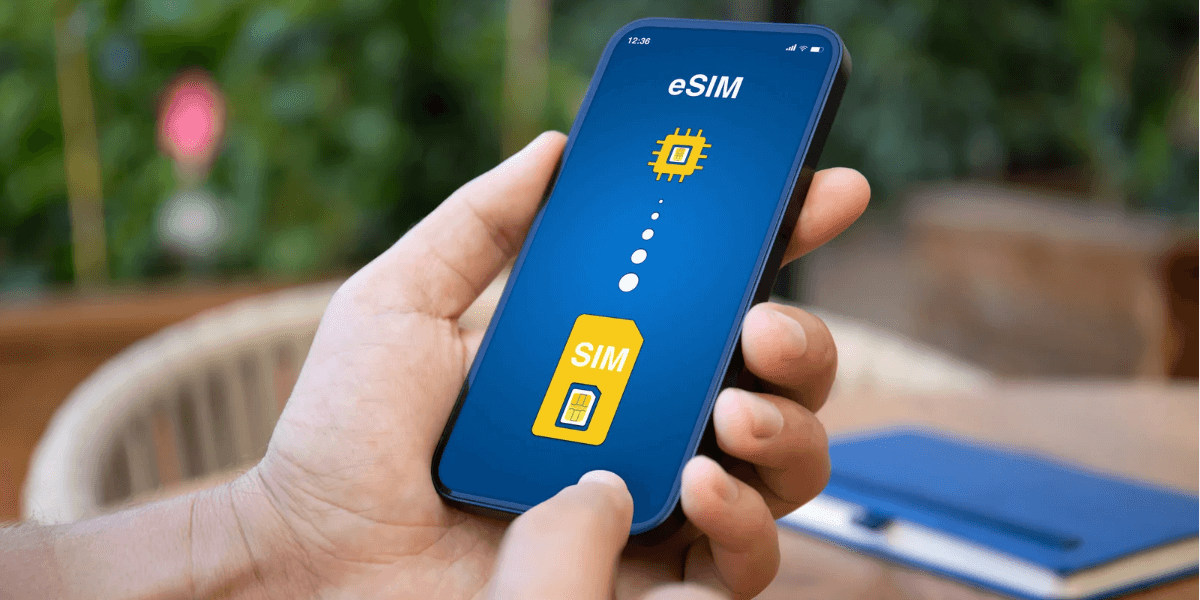
The majority of mobile carriers enable customers to establish a SIM lock PIN or port-out PIN which stops unauthorized phone number transfers. The absence of this PIN makes it possible for hackers to trick customer service representatives into moving your phone number to their SIM card.
How to Enable SIM Protection:
|
Carrier |
How to Set a PIN |
Customer Service # |
|
T-Mobile |
Account > Security > SIM Protection |
1-800-937-8997 |
|
AT&T |
Request “Number Transfer PIN” online |
1-800-331-0500 |
|
Verizon |
Enable “Number Lock” in account settings |
1-800-922-0204 |
Why This Works:
- The PIN acts as a security measure which protects your number from transfer even when hackers possess your SSN and account number.
- Some carriers including T-Mobile have implemented Account Takeover Protection which demands additional verification steps for changes.
Important Notes:
- Choose PINs that are not easily guessable such as birthdays or the number 1234.
- Keep your PIN safe by not storing it in your phone notes.
3. Warn Your Bank & Enable Extra Security

The banking industry continues to use SMS verification as their primary method which makes them vulnerable to SIM swap attacks. Hackers who gain control of your phone number can reset passwords and drain your accounts through quick actions.
How to Secure Your Bank Accounts:
1. Call Your Bank: Ask if they offer:
- Voice authentication (call-in verification)
- Hardware token options (e.g., RSA SecurID)
- Transaction blocking for suspicious activity
2. Remove SMS 2FA Where Possible:
- Switch to app-based authentication or security keys.
- If SMS is the only option, ask for higher fraud alerts.
3. Set Up Alerts:
- Enable notifications for logins, withdrawals, and password changes.
Real-World Example: The 2023 FTC report demonstrated that 40% of SIM swap victims lost their bank funds because their financial institutions continued to use SMS verification.
4. Freeze Your Credit & Monitor Accounts

The most effective method to stop identity theft after a SIM swap is through implementing a credit freeze. The freezing of your credit makes it impossible for lenders to access your credit report thus blocking scammers from opening new accounts under your name.
How to Freeze Your Credit:
- Contact all three bureaus (Experian, Equifax, TransUnion)
- Visit their websites or call to request a freeze
- Set up a unique PIN for each bureau
- Freeze ChexSystems for bank account protection
Additional Monitoring Steps:
- Enable fraud alerts (lasts 1 year, renewable)
- Check bank statements weekly for unauthorized charges
- Use credit monitoring services (Credit Karma, IdentityForce)
Why This Matters:
- Prevents new credit card/loan approvals
- Stops utility/phone account openings
- Adds extra layer beyond phone security
Pro Tip: Unfreeze temporarily when applying for credit, then refreeze immediately after.
5. Avoid Sharing Personal Info Online
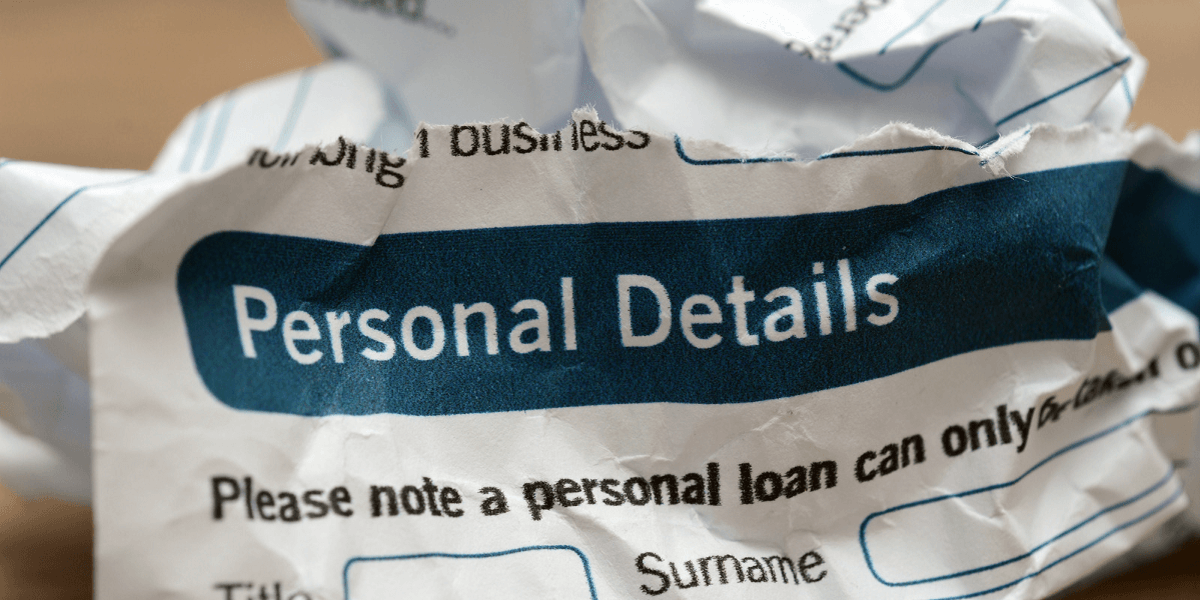
Social media platforms serve as a treasure trove for SIM swappers. Sharing personal details with others allows criminals to answer security questions and create fake identities.
The following information poses risks when shared online:
- Full birth date (especially year)
- Phone number
- Pet names (common security answers)
- Home address
- Vacation plans (shows when you’re away)
Smart Privacy Practices
- Set profiles to private
- Use nicknames instead of real names
- Create fake answers to security questions
- Regularly audit old posts for leaks
A 2023 research revealed that 68% of SIM swap victims provided security answers which could be easily predicted from their social media profiles.
Advanced Protection
- Use a separate email for financial accounts
- Consider a Google Voice number for public use
- Enable privacy settings on all social platforms
6. Be Alert to Phishing & Fake Carrier Calls

The attackers conduct complex phishing operations before they initiate a SIM swap. The detection of these scams enables the prevention of attacks at their initial stages.
Common Scam Tactics:
- The scammers send “urgent” messages about suspicious transactions.
- The fake carrier system sends notifications about “account issues.”
- The scammers pretend to be representatives of “tech support” when they make their calls.
- The emails contain malicious links which ask users to update their account information.
How to Spot and Avoid It
- Never share verification codes with anyone
- Hang up and call back using official numbers
- Examine the messages for their poor grammatical quality.
- Verify sender email addresses carefully
Carrier-Specific Warning Signs
- The “Account PIN reset” scam is a warning sign that T-Mobile users should be aware of.
- The phishing attempts at Verizon target users through “Network upgrade” scams.
- AT&T users should be cautious about “Suspicious login” alerts which appear to be fake.
Protection Tools
- The phone’s spam filtering feature should be activated.
- The built-in call screening capabilities should be used.
- The installation of security applications from reputable sources such as Truecaller should be considered.
The FBI documented a 45% rise in phishing attempts during 2023 which often served as a precursor to SIM swap attacks.
7. Use a Separate Number for Financial Accounts

The protection of your main phone number against SIM swap attacks becomes much stronger when you keep it private. A different phone number for important financial accounts provides an additional layer of security.
Best Options for Alternate Numbers
1. Google Voice
- Free VoIP number
- Not tied to physical SIM
- Can be secured with 2FA
2. Burner Apps
- MySudo (privacy-focused)
- Hushed (temporary numbers)
3. Prepaid SIM
- Dedicated cheap plan
- Never share this number
Implementation Strategy
- Update all financial accounts
- Use for crypto exchanges
- Never post this number publicly
Added Benefits
- Reduces spam calls
- Separates personal/professional communications
- Easier to change if compromised
Case Study: Crypto investors using separate numbers reported 80% fewer security incidents (2024 Security Journal).
SIM Swap Protection Checklist 2025
|
Protection Layer |
Action Items |
Frequency |
|
Authentication |
Replace SMS 2FA with Authy/Google Auth |
One-time setup |
|
Carrier Security |
Set SIM PIN, enable port protection |
One-time + annual review |
|
Financial Accounts |
Remove phone recovery, add hardware keys |
Quarterly check |
|
Credit Protection |
Freeze all 3 bureaus + ChexSystems |
One-time + temporary unfreezes |
|
Online Privacy |
Audit social media, fake security answers |
Monthly review |
|
Vigilance |
Monitor for phishing, unusual activity |
Ongoing |
|
Backup Plan |
Prepare recovery documents |
Annual update |
Warning Signs to Watch For
Identify these SIM swap attack indicators right away.
Immediate Red Flags:
- Sudden loss of cell service with no explanation
- Receiving “Welcome to [Carrier]” messages
- Inability to make calls or send texts
- Friends receiving strange messages from your number
- Account lockout notifications
- Unexpected password reset emails
- Account lockout notifications
Secondary Warning Signs:
- Unusual account activity notifications
- New device login alerts
- Changes to account settings you didn’t make
- Unexpected verification codes via email
- Friends asking about suspicious social media posts
What to Do If You’ve Been SIM Swapped (Emergency Steps)
1. Immediately Contact Your Carrier
- Call from another phone (hacked device won’t work)
- Demand to freeze your account and reverse the SIM swap
2. Secure Financial Accounts
- Banks/Crypto: Freeze transactions, change passwords
- Email: Remove phone number recovery options
3. File Reports With
- FTC (IdentityTheft.gov)
- FBI IC3 (for crypto theft)
- Local police (for insurance claims)
4. Long-Term Recovery
- Update all recovery methods
- Consider a new phone number for critical accounts
Final Words
SIM swap scams become preventable through the implementation of security measures that people can take in advance. The combination of disabling SMS 2FA and setting carrier PINs and freezing credit and using alternative numbers creates multiple security barriers against fraudsters. The hackers focus on victims who depend only on text verification and who use the same personal details across different online platforms.
Regularly check your financial accounts while staying alert to phishing attempts and teach your family members about these security risks. The evolution of cybercriminals can be matched by the development of your defensive measures.
Frequently Asked Questions (FAQs)
What are the signs of a SIM swap attack?
Common signs include sudden loss of cell service, unexpected “number transfer” text messages, and unauthorized account access alerts. Users may also receive password reset emails they did not request.
Can someone swap my SIM card without my permission?
Scammers can swap SIM cards by contacting mobile carriers with stolen personal information. They convince carrier representatives they are the legitimate account owner needing a new SIM card.
How long does it take to recover from a SIM swap?
SIM swap recovery typically takes 24-72 hours. Users must contact their mobile carrier, change passwords, enable two-factor authentication, and report fraud to financial institutions.
Does eSIM prevent SIM swapping?
eSIMs provide better security against SIM swapping than physical SIM cards. The digital nature of eSIMs makes them harder to duplicate or transfer without proper authorization.
Can I sue my carrier for a SIM swap?
Customers can take legal action against carriers for SIM swap incidents. Success depends on proving carrier negligence in protecting customer accounts and following security protocols.
What should I do immediately after a SIM swap attack?
Contact your mobile carrier to regain control of your phone number. Change passwords for all important accounts. Enable non-SMS two-factor authentication. Report the incident to law enforcement.

Priya Mervana
 Verified Web Security Experts
Verified Web Security Experts
Priya Mervana is working at SSLInsights.com as a web security expert with over 10 years of experience writing about encryption, SSL certificates, and online privacy. She aims to make complex security topics easily understandable for everyday internet users.
